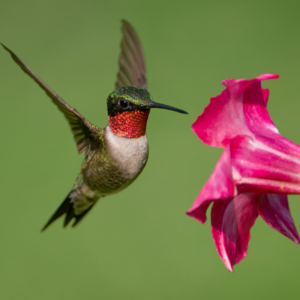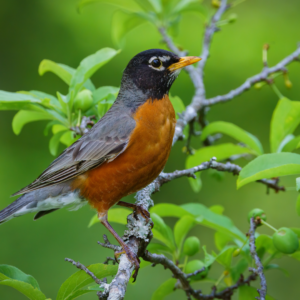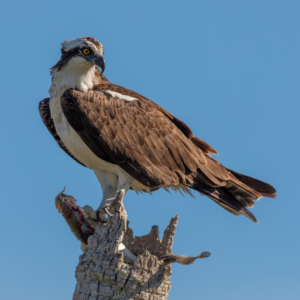The phenomenon of bird migration, an intricate dance orchestrated by millions of birds across the globe, stands as one of nature’s most captivating spectacles. For centuries, scientists and bird enthusiasts have been drawn to the mysteries of avian migration, seeking to unravel its secrets and understand the forces that propel birds on their epic journeys. In this comprehensive educational guide, we embark on a journey of discovery, delving deep into the scientific intricacies of bird migration, exploring the diverse migration routes traversed by avian travelers, spotlighting common migratory birds, and elucidating the vital role of birdwatchers in conservation efforts. By the end of this guide, readers will gain a profound understanding of bird migration and emerge equipped with the knowledge to appreciate and safeguard these magnificent journeys. There are dedicated platforms and resources where one can observe and track bird migrations.
Understanding Bird Migration
At the heart of bird migration lies a complex interplay of biological, ecological, and environmental factors. Migration is not merely a seasonal movement; it is a meticulously orchestrated phenomenon shaped by millennia of evolutionary adaptations. Central to the understanding of migration is the innate migratory instinct ingrained within the genetic makeup of birds. Across generations, birds have honed their navigational skills, ensuring the successful passage of their species across vast distances.
The biological mechanisms driving migration are equally fascinating. As daylight wanes and temperatures shift with the changing seasons, birds undergo remarkable physiological changes in preparation for their journey. Hormonal signals trigger the accumulation of fat reserves, providing the energy necessary for sustained flight. These physiological adaptations, finely tuned by evolution, enable birds to embark on arduous migrations spanning continents and oceans.
Environmental cues play a pivotal role in guiding migratory journeys. Birds navigate using a sophisticated array of cues, including the Earth’s magnetic field, celestial cues such as the position of the sun and stars, visual landmarks, and even olfactory cues. Through a combination of innate instincts and environmental cues, birds navigate with astonishing precision, charting their course across vast and varied landscapes.
Exploring Migration Routes
The migration routes followed by birds are as diverse as the species themselves, encompassing a network of flyways that crisscross the globe. Each flyway presents a unique set of challenges and opportunities for migrating birds, shaping their behavior and influencing their choice of stopover sites. Among the most prominent flyways are the Americas Flyway System, the East Asian-Australasian Flyway, and the African-Eurasian Flyway.
In North America, four major flyways facilitate the movement of millions of birds between breeding and wintering grounds. The Atlantic Flyway, Pacific Flyway, Central Flyway, and Mississippi Flyway serve as vital conduits for migratory species, connecting a diverse range of habitats from tundra to tropical rainforests. Along these flyways, birds encounter a mosaic of ecosystems, each offering unique resources and challenges.
Common Migratory Birds
Numerous bird species undertake migratory journeys, each with its unique route, timing, and ecological requirements. Among the most iconic migratory birds are those that embark on epic transcontinental journeys, spanning thousands of miles in search of suitable breeding or wintering grounds.

- Ruby-throated Hummingbird (Archilochus colubris): Despite their diminutive size, ruby-throated hummingbirds undertake remarkable migrations spanning up to 3,000 miles from their breeding grounds in eastern North America to wintering grounds in Central America. These tiny marvels of the avian world showcase extraordinary navigational skills, relying on a combination of visual cues and instinct to guide their migration.

- American Robin (Turdus migratorius): The quintessential harbinger of spring, the American robin embarks on extensive migrations, with populations from northern latitudes traveling southward to wintering grounds in the southern United States and Mexico. Robins are renowned for their distinctive red breast and melodious song, making them a beloved sight for birdwatchers during migration seasons.

- Osprey (Pandion haliaetus): Often referred to as the “fish hawk,” the osprey is a formidable raptor renowned for its fishing prowess. Ospreys undertake long-distance migrations, with populations from North America traveling to wintering grounds in Central and South America. These majestic birds can be spotted soaring over coastal areas and inland water bodies during migration, their keen eyes scanning for prey below.

- Barn Swallow (Hirundo rustica): With its distinctive forked tail and graceful aerial acrobatics, the barn swallow is a familiar sight in both urban and rural landscapes. Barn swallows undertake epic migrations, traveling from breeding grounds in North America to wintering areas in Central and South America. These agile birds are often observed darting through the sky, catching insects on the wing during migration.

- Yellow Warbler (Setophaga petechia): Adorned in vibrant yellow plumage, the yellow warbler is a symbol of springtime in North America. These small songbirds undertake extensive migrations, traveling from breeding grounds in North America to wintering areas in Central and South America. Their cheerful song and bright colors make them a delight to observe during migration seasons.
Peak Migration Seasons and Birdwatching
Timing plays a critical role in maximizing birdwatching opportunities during migration seasons. Spring and fall represent the peak periods for bird migration, as birds embark on their journeys to breeding or wintering grounds. During these seasons, birdwatchers can witness the spectacle of migratory flocks passing through diverse landscapes, from coastal shorelines to inland forests.

Understanding the factors influencing bird migration patterns allows birdwatchers to predict peak migration times and select optimal locations for observation. Weather conditions, wind patterns, and geographic features all influence the timing and intensity of migration, shaping the distribution of migratory birds across different regions.
Contributing to Conservation Efforts
Birdwatchers play an indispensable role in conservation efforts aimed at protecting migratory bird populations. Citizen Science initiatives such as eBird and the Great Backyard Bird Count harness the collective observations of birdwatchers to track bird populations, monitor migration patterns, and identify areas of conservation concern.
By participating in these initiatives, birdwatchers contribute valuable data that inform conservation strategies and policy decisions. Additionally, engaging in habitat restoration projects, supporting local conservation organizations, and advocating for the protection of critical migratory habitats further enhances the impact of birdwatchers in safeguarding migratory bird populations for future generations.
In conclusion, bird migration represents a testament to the remarkable adaptability and resilience of avian species. By unraveling the scientific principles underpinning migration, exploring migration routes, familiarizing ourselves with common migratory birds, mastering the art of timing birdwatching outings, and actively participating in conservation efforts, birdwatchers can deepen their appreciation for this awe-inspiring natural phenomenon and contribute to the preservation of migratory bird populations worldwide. Let us embark on a journey of discovery and conservation, as we unlock the marvels of bird migration together. Happy birdwatching and please check out this bird watching 101 guide!
Summary
Bird migration is a captivating natural phenomenon driven by a complex interplay of biological, ecological, and environmental factors. In this comprehensive guide, we explore the underlying mechanisms of migration, the diverse migration routes traversed by birds, and spotlight common migratory species. We discuss the importance of timing in birdwatching during peak migration seasons and the vital role of birdwatchers in conservation efforts. By understanding and appreciating bird migration, we can contribute to the preservation of migratory bird populations worldwide.
Check out these beautiful flowers for your next garden!


This article makes me want to become a more dedicated bird watcher. I’d love to explore bird migration routes for the birds coming and going around here. I’ve seen some gorgeous birds not commonly found around here this year. I’d love to know where they came from and where they were going. This is so fascinating.